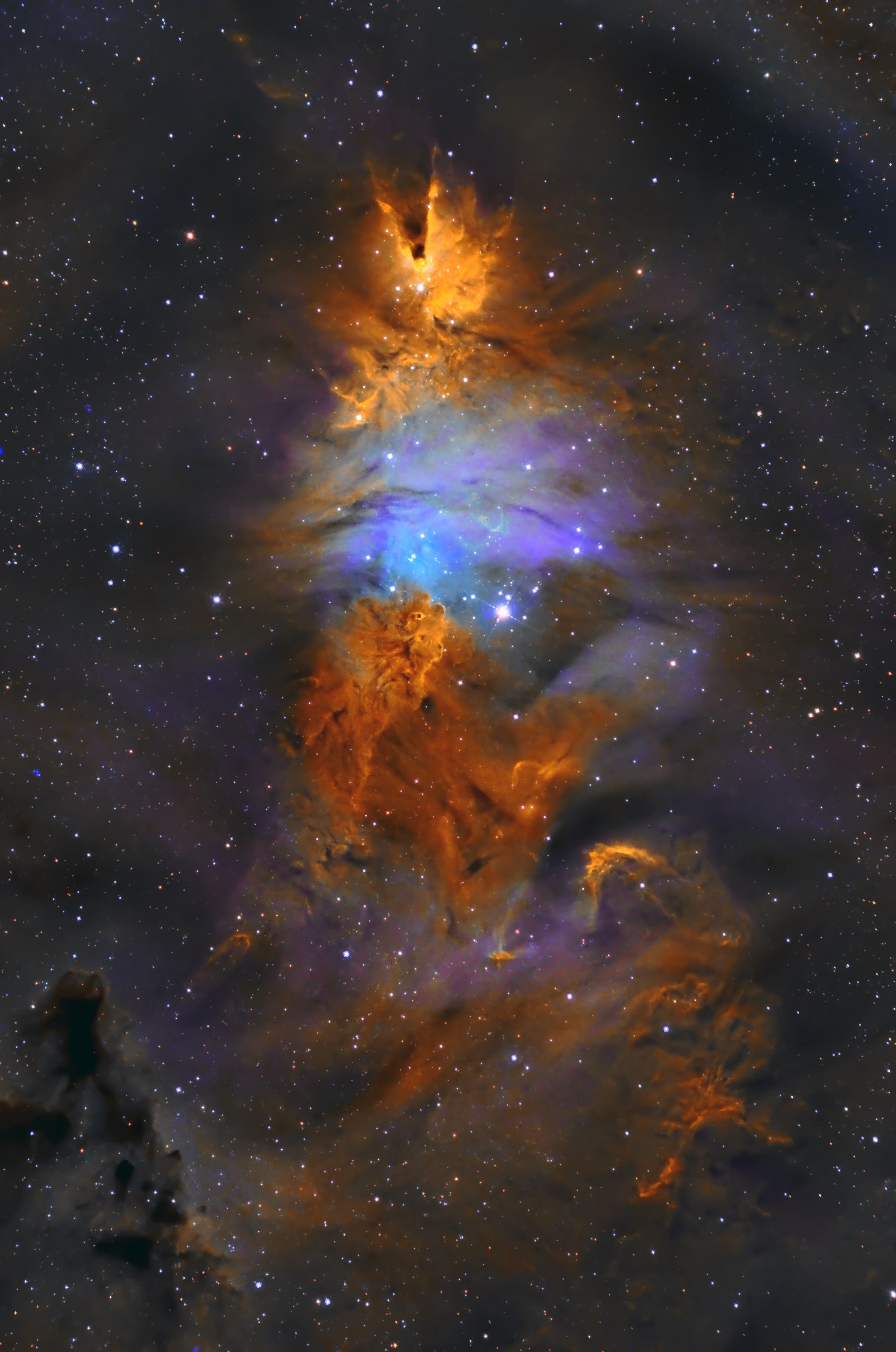M20 Nebula: Unveiling the Trifid Nebula's Cosmic Tapestry
As the holiday season brings to mind shimmering lights and celebratory decorations, there's no better celestial counterpart than the Christmas Tree Nebula. Also known as NGC 2264, this fascinating nebula is a vibrant accumulation of cosmic dust and gas that plays a critical role in the birth of stars. Located in the Monoceros constellation, approximately 2,600 light-years from Earth, this nebula is a stellar nursery that lights up the winter night skies with its festive glow. Let’s unwrap the mysteries of NGC 2264 and discover what makes this cosmic wonder a perennial favorite among astronomers and stargazers alike
The Christmas Tree Nebula, NGC 2264, comprises both an emission nebula and a dark nebula. At its heart is a cluster of young, hot stars, whose stellar winds and radiation illuminate the surrounding gas. The nebula gets its name due to the characteristic shape of its gas cloud, which resembles a Christmas tree when viewed in the infrared spectrum, with the Cone Nebula forming the apex or the "tip" of the tree.

photographer:Klyress
camera:ToupTek ATR3CMOS26000KMA
telescope:Skywatcher 150P/F5,
Equatorial mount:heq5 pro
Filter:Optolong SHO 3nm
NGC 2264 is a region abundant with interstellar material prime for star formation. Within the nebula, protostars are taking shape through the gravitational collapse of dust and gas that further heat up and eventually ignite nuclear fusion to form new stars. The festive moniker of the nebula is a charming nod to its fertile properties, birthing stars akin to the gifts nestled under a Christmas tree.
The Cone Nebula, a part of the Christmas Tree Nebula, is a dark pillar of dense gas and dust. It acts as a stellar incubator, shielding nascent stars from harsh stellar radiation. The Cone Nebula is notoriously difficult to capture due to its dimness, but in long-exposure images, its conical shape becomes readily apparent, much like a shadowy, cosmic pinnacle.
Capturing the splendor of NGC 2264 is a delightful challenge for astrophotographers. Amateurs and professionals alike aim to detail the intricate luminosity and complex textures within the nebula. Using narrow-band filters such as H-alpha, SII, and OIII can highlight particular features and wavelengths emitted by specific ionized elements, revealing the nebula's true colors against the backdrop of space.
For those eager to observe NGC 2264 through a telescope, winter skies provide the best backdrop. The nebula can be seen with modest amateur equipment, given a clear and dark environment. The cluster of stars that form the tree's 'base' is visible to the naked eye under ideal conditions and is spectacular when viewed with the aid of a telescope or binoculars.

ToupTek ATR3CMOS26000KMA
The Christmas Tree Nebula, NGC 2264, remains a source of wonder and beauty, enriching our knowledge of star formation and the vast complexities of interstellar media. Its holiday-themed visage inspires amateur astronomers to peer into the heavens and professional scientists to continue unraveling cosmic secrets. Next time you look up at the winter sky, remember that there's a celestial celebration unfolding in the constellation Monoceros—a true Christmas tree that shines bright with the gift of burgeoning stars.
